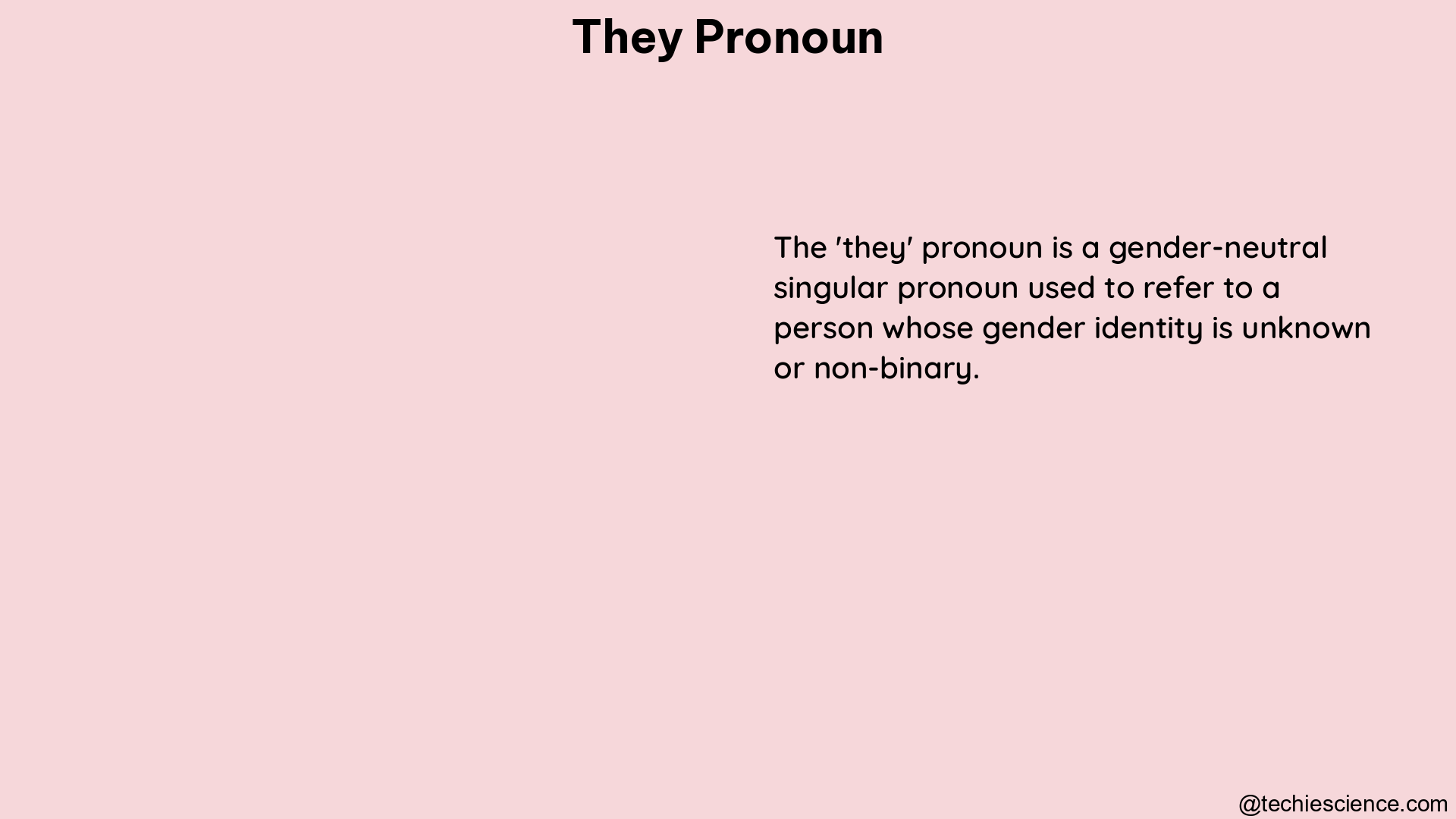The “they” pronoun is a gender-neutral pronoun used to refer to a single person whose gender identity is not exclusively male or female. This comprehensive guide delves into the advanced details and grammatical specifications surrounding the use of the “they” pronoun, providing a thorough understanding for English language learners and enthusiasts.
Gender Neutrality: Exploring the Nuances
The “they” pronoun is inherently gender-neutral, meaning it does not explicitly or exclusively imply a nonbinary identity. While nonbinary individuals may use “they” pronouns, not all nonbinary people do, and some people who do not identify as nonbinary may also prefer “they” pronouns. This nuance is crucial to understand, as it highlights the personal nature of pronoun usage and the diversity within the gender spectrum.
Pronouns and Personal Identity

Pronouns are a fundamental aspect of one’s identity, but they do not define it. Using “they” pronouns does not necessarily mean someone is nonbinary; it is a personal choice that reflects their gender identity. This understanding is essential in fostering a respectful and inclusive environment, where individuals are free to express their identity without assumptions or judgments.
Variations in Pronoun Usage
While the “they” pronoun is widely used and accepted, it is important to recognize that some nonbinary individuals may not use “they” pronouns due to various factors. These can include safety concerns, cultural associations, or personal preferences. For example, Ashleigh Shackelford, a Black femme individual, prefers “she/her” pronouns as they represent her identity. This diversity in pronoun usage highlights the importance of respecting individual preferences and avoiding assumptions.
The Shift Towards Inclusive Language
The use of “they” pronouns is part of a broader movement towards inclusive language, which aims to acknowledge and respect diverse gender identities. This shift is crucial in creating a more inclusive and welcoming environment for individuals of all gender expressions. By adopting the use of “they” pronouns, we can actively contribute to this positive change and foster a more understanding and respectful society.
Grammatical Considerations
When using the “they” pronoun, it is important to understand the grammatical nuances and conventions. Here are some key points to consider:
-
Singular vs. Plural Usage: The “they” pronoun can be used both in the singular and plural sense. For example, “Someone left their umbrella in the office. Could you please let them know where they can get it?” In this case, “they” is used to refer to a single individual.
-
Subject and Object Forms: The “they” pronoun has both subject and object forms. The subject form is “they,” while the object form is “them.” For example, “They went to the park” (subject) and “I saw them at the park” (object).
-
Possessive Form: The possessive form of “they” is “their.” For example, “Their book is on the table.”
-
Reflexive Form: The reflexive form of “they” is “themself” or “themselves.” For example, “They bought themself a new shirt” or “They made themselves a sandwich.”
-
Antecedent Agreement: When using the “they” pronoun, it is important to ensure that the pronoun agrees with the antecedent (the noun or noun phrase it refers to). For example, “The student left their book on the desk” (correct) vs. “The student left his book on the desk” (incorrect assumption of gender).
-
Formal vs. Informal Usage: The “they” pronoun can be used in both formal and informal contexts, depending on the situation and the preferences of the individual.
By understanding these grammatical considerations, you can effectively and respectfully incorporate the “they” pronoun into your written and spoken communication.
Examples of “They” Pronoun Usage
Here are some examples of the “they” pronoun in use:
- “Somebody left their umbrella in the office. Could you please let them know where they can get it?”
- “This is my friend, Jay. I met them at work.”
- “The student submitted their assignment on time.”
- “The employee spoke to their manager about the project.”
- “Alex bought themself a new laptop for their birthday.”
These examples demonstrate the versatility and proper application of the “they” pronoun in various contexts, highlighting its role in fostering inclusive and respectful language.
Conclusion
The “they” pronoun is a powerful tool in promoting gender inclusivity and respecting individual identity. By understanding the nuances of its usage, including gender neutrality, personal identity, variations in usage, and grammatical considerations, we can actively contribute to a more inclusive and understanding society. This comprehensive guide serves as a valuable resource for English language learners and enthusiasts, empowering them to confidently and respectfully incorporate the “they” pronoun into their communication.
Reference:
- https://www.them.us/story/coming-out-they-them-pronouns
- https://hbr.org/2021/06/my-pronouns-are-she-they-what-are-yours
- https://www.teenvogue.com/story/they-them-questions-answered

The lambdageeks.com Core SME Team is a group of experienced subject matter experts from diverse scientific and technical fields including Physics, Chemistry, Technology,Electronics & Electrical Engineering, Automotive, Mechanical Engineering. Our team collaborates to create high-quality, well-researched articles on a wide range of science and technology topics for the lambdageeks.com website.
All Our Senior SME are having more than 7 Years of experience in the respective fields . They are either Working Industry Professionals or assocaited With different Universities. Refer Our Authors Page to get to know About our Core SMEs.